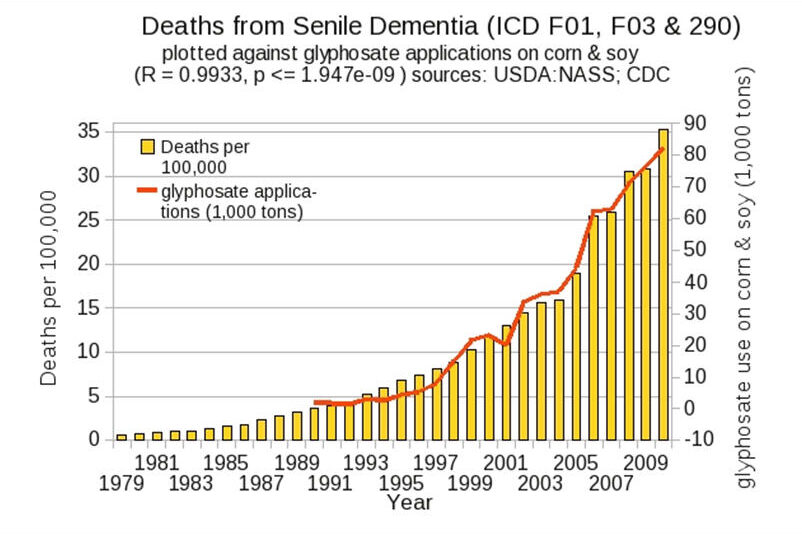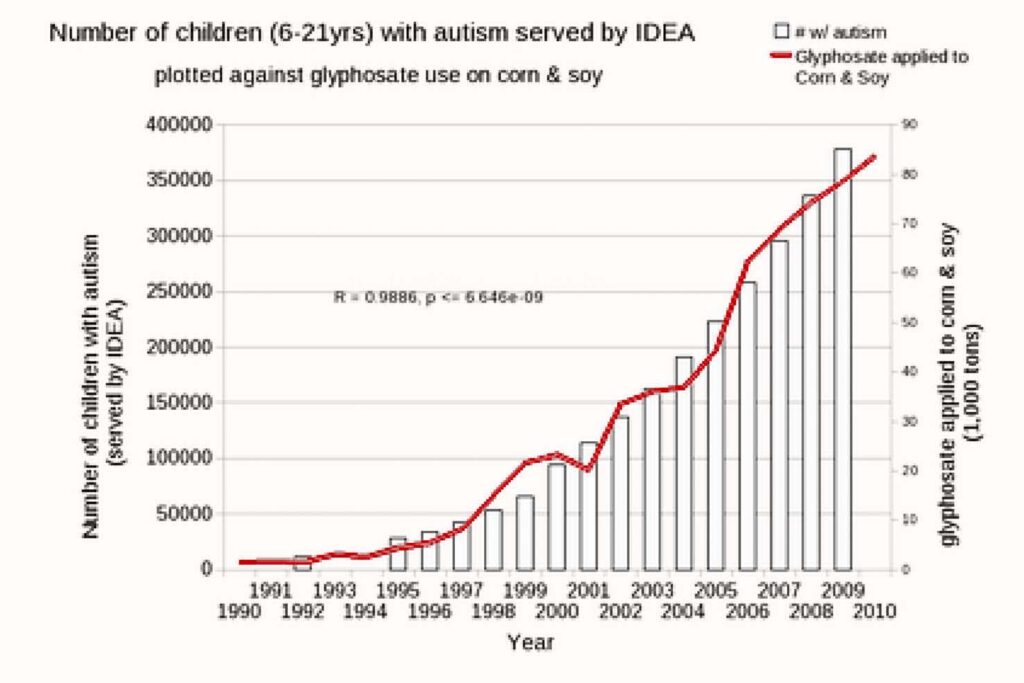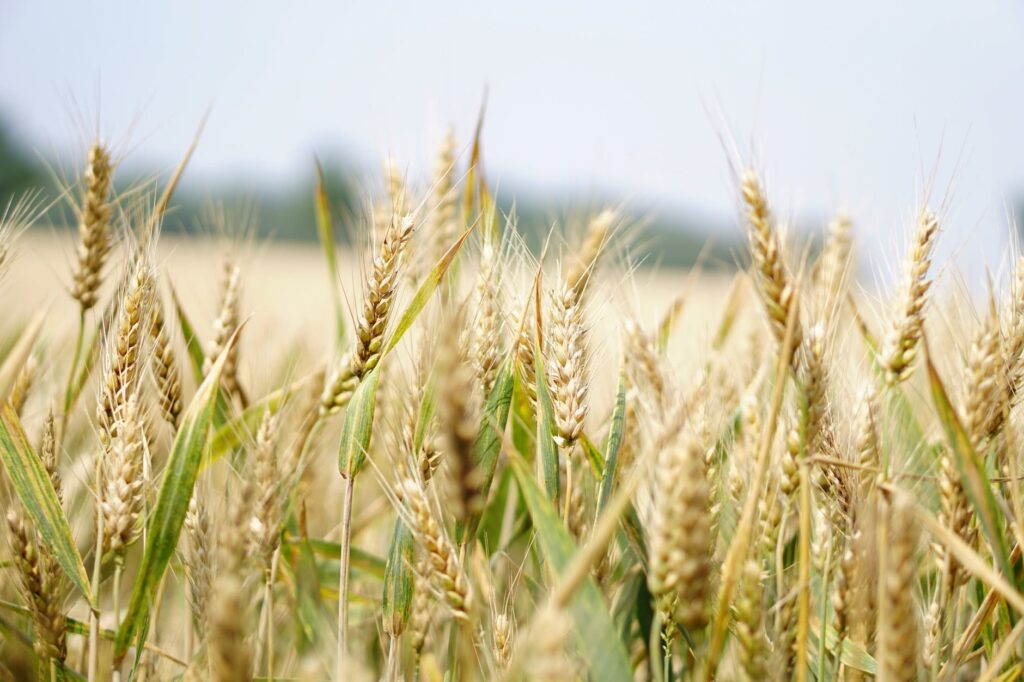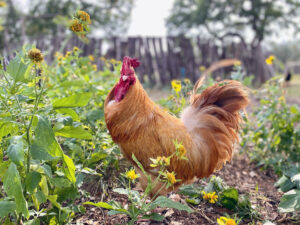For decades, one of the main arguments against genetically modified (GM) crops has been that they introduce into the food supply new toxins and allergens. This argument is true in many cases, but we now have a more alarming reality to contend with: non-GM crops are increasingly being drenched in glyphosate right before harvest. How can this be? The answer requires a closer look at some of the false narratives surrounding genetically modified crops that have persisted despite evidence to the contrary. Let’s start with Roundup Ready crops.
Glyphosate is the active ingredient in Roundup, which was the most used herbicide in the world for decades.
Glyphosate is an herbicide first introduced in 1974, and it’s the most used herbicide in the world. The active ingredient in Roundup, glyphosate was first used in agriculture to kill weeds on genetically engineered crops (GMOs) such as corn, soybean and cotton. This began in 1976 when GMO crops were first grown commercially for use by farmers.
Since then, we have seen a dramatic increase in the number of new GMOs introduced each year — from zero seeds back then to over 2 million today!
The use of glyphosate has increased significantly since glyphosate-resistant crops were introduced in 1996.
Since its introduction in 1996, the use of glyphosate has increased significantly. In 2009, it was used at a rate of 180 million pounds per year; however, by 2017 this number had jumped to 827 million pounds. This is an increase of over 500% in just ten years!
Glyphosate use has increased by over 10 times since 1996 when Roundup Ready crops were introduced into our food supply.
In 5 years, Americans consumed more than one million pounds of glyphosate from genetically engineered grain-based foods.
In 2014, a study estimated that Americans would have consumed more than one million pounds of glyphosate from genetically engineered grain-based food ingredients between 1995 and 2000. The study was done by the Environmental Working Group, a nonprofit research organization based in Washington D.C., and involved interviews with former employees of Monsanto, which developed glyphosate-tolerant crops. These employees revealed internal documents showing that the company routinely tested its products on rats to assess their safety prior to seeking government approval for their use in agriculture—a practice known as “substantial equivalence”—and found results that were troubling:
- Rats given an intraperitoneal dose of 1 mg/kg (which equates to what humans would get if they ate 0.1 mg/kg) showed signs of liver disease within two weeks;
- Rats given intraperitoneal doses at 0.5 mg/kg daily for 90 days showed severe liver and kidney damage;
- Rats given doses between 0.1 mg/kg–0.25 mg/kg daily for 13 weeks developed tumors in the kidneys, pancreas and pituitary gland;
That tenfold increase in consumption was just the beginning.
You may have known that consumption of glyphosate has increased by ten-fold since the introduction of glyphosate-resistant crops, but it’s part of a much larger story. The increase in consumption was also the result of other major changes in agriculture: specifically, the introduction of Roundup Ready soybeans and corn.
The following charts shows how much glyphosate use has been increasing in the United States. The charts also align the increased glyphosate use with increases in both senile dementia and autism.


The International Agency for Research on Cancer classified glyphosate as a probable carcinogen.
The International Agency for Research on Cancer (IARC) classified glyphosate as a probable human carcinogen in 2015, stating that “there is sufficient evidence of carcinogenicity in experimental animals.”
Glyphosate accumulates over time in your body’s organs.
Glyphosate accumulates over time in your body’s organs. Your fat stores it, your gut bacteria break it down and your kidneys excrete it back into your system where it migrates to new fat stores to continue its life cycle until you consume enough of it to activate the biological pathways that result in cancerous tumor growth.
Additional studies have found that individuals exposed to glyphosate had an increased risk of developing non-Hodgkin lymphoma, increased risk in fertility issues as a result of endocrine disruption, and increased risk for neurological disorders, causing leaky brain in addition to leaky gut as the water-soluble chelating-agent, glyphosate is able to carry metals into the bloodstream, brain, and gut. Dr Sina McCullough discuses this extensively in a recent podcast with Joel Salatin.
How exactly does Roundup work?
The mechanism of action of glyphosate is associated with its ability to block the shikimic acid pathway, which is involved in the synthesis of aromatic amino acids in plants, fungi, and some microorganisms. Because animals do not have a shikimate pathway, it was assumed to be safe for humans.
Glyphosate is a patented antibiotic.
This is a huge topic in itself, and we think that Dr. Zach Bush is an amazing resource when it comes to the microbiome, which is critical to our health and wellness. The gut is referred to as the second brain and gut health is second-to-none when it comes to wholistic well-being.
While humans do not possess a shikimate pathway, the trillions of bacteria making up our gut biome do possess shikimic acid pathways that are responsible for producing aromatic amino acids essential to making things like serotonin, tryptophan, and dopamine.
How does glyphosate get into non-GMO or organic grains? The answer is somewhat surprising.
Glyphosate is the active ingredient in Roundup and other herbicides. It’s used to kill weeds and prevent them from spreading, but it can also be used for desiccation—the killing of plants just before harvest. The reason for this is that when a plant is dried out, its nutrients become more concentrated and thus easier to extract by humans.
Today, non-GMO grains are increasingly being sprayed with glyphosate to desiccate them, meaning they are killed a few days before harvest. This process hastens the natural drying process.
While glyphosate has been connected with many health problems, there are many other chemicals sprayed on our food during the drying process (which can be as long as 14 days). These chemicals are less regulated than glyphosate-based herbicides because they don’t directly kill weeds or plants; instead they make them more brittle by drying them out so they snap easily when bent over rather than bending back upright.
In a recent study, 69% of non-GMO and 22% of organic foods tested were found to have glyphosate contamination.
The Detox Project
More than one billion pounds of glyphosate are used worldwide every year.
More than one billion pounds of glyphosate are used worldwide every year. Glyphosate has been the most widely used herbicide in the world since its introduction as Roundup in 1974.
Since then, glyphosate use has increased significantly due to the introduction of crops genetically engineered to tolerate this herbicide, making it possible for farmers to spray their fields once and kill all vegetation—including weeds that would otherwise compete with their crops for nutrients and sunlight.
The widespread adoption of these herbicide-tolerant crops has led farmers around the world to increase their use of glyphosate by more than 1 million pounds per year between 1996 and 2014, according to recent estimates by Environmental Protection Agency scientists.
You can still avoid glyphosate by knowing your farmer.
Glyphosate will show up on your plate whether or not you buy organic or non-organic groceries from the store—it’s in everything from bread to cereal to milk chocolate! The best way to avoid glyphosate by knowing your farmer and how they grow, harvest, and process their grains.
- Know where your food comes from. When you purchase non-GMO grain products, ask the farmer about their farming practices. If the farmer uses glyphosate for weed control or as a desiccant, try to find another source of non-GMO grains that has been grown without the use of this herbicide or one that can promise it was not sprayed with glyphosate before harvest.
- Avoid non-organic or conventional processed foods from companies that source from farms known to use glyphosate in crop production as well as conventional animal feeds.
Conclusion
You cannot escape glyphosate. It is in the food system and it is in your body. But you can minimize your exposure by knowing your farmer, buying local, and buying organic.







One thought on “Glyphosate is Now Common in Non-GMO Grains. What Can You Do?”
Interested in healthy eating